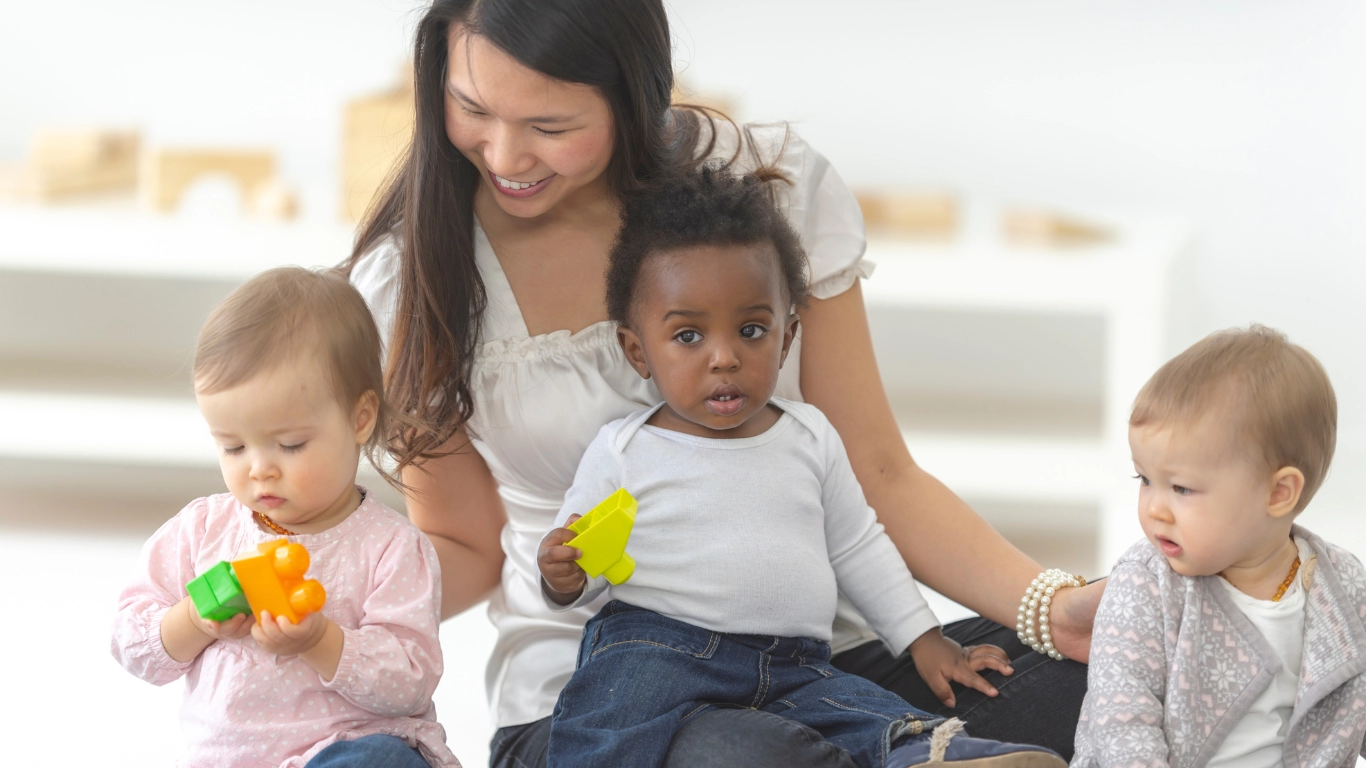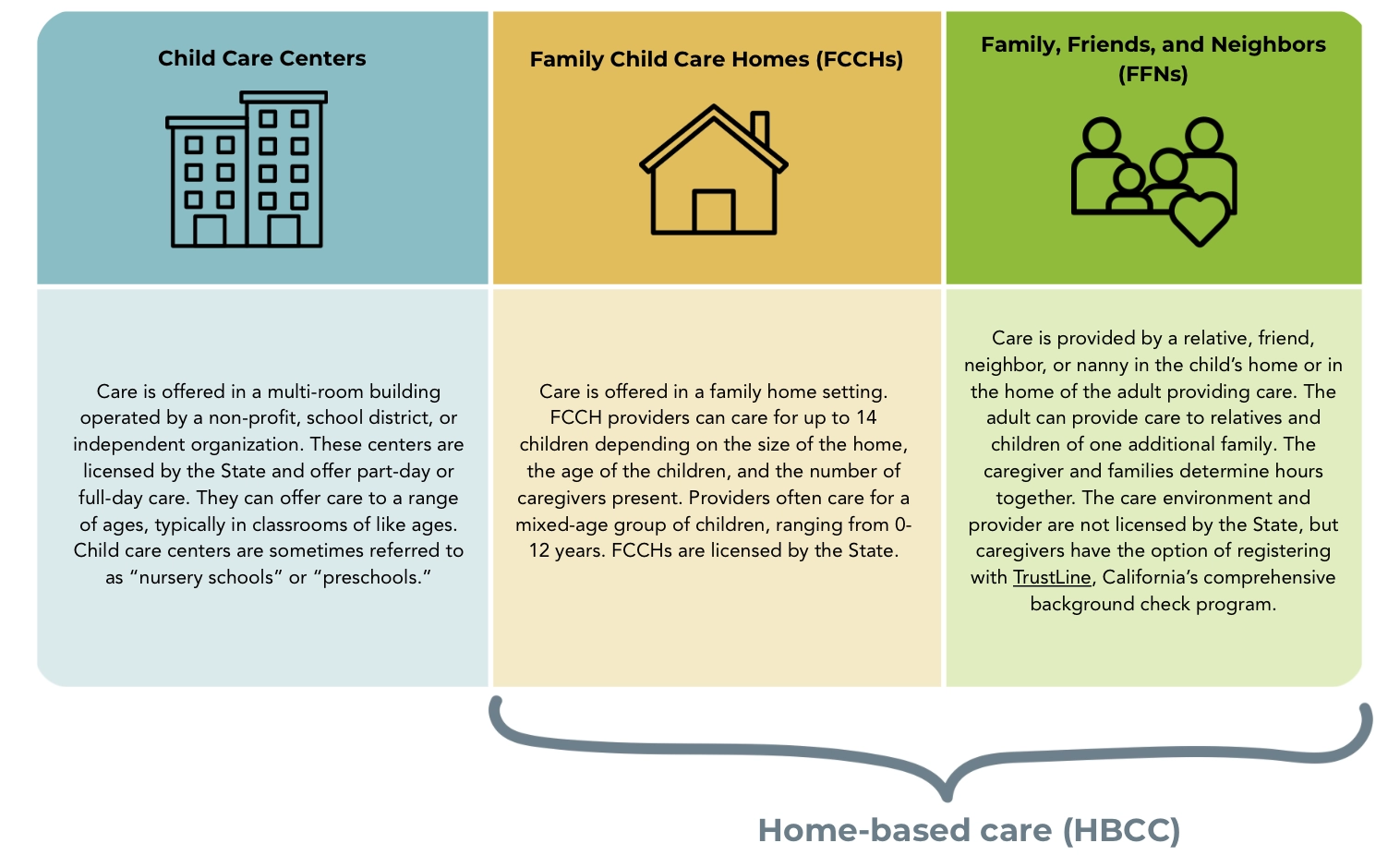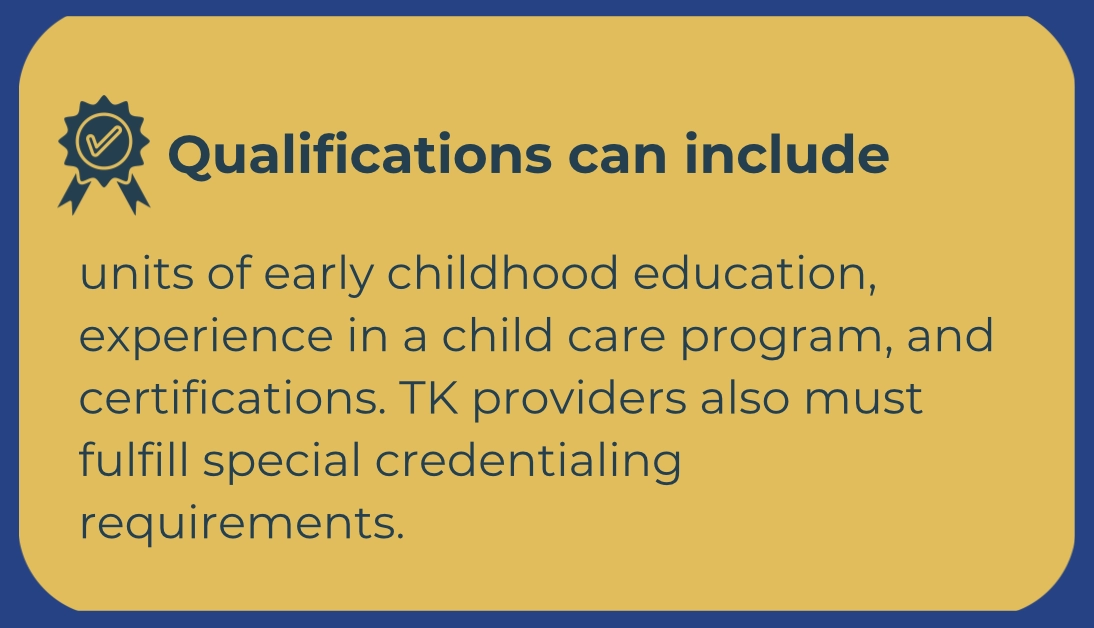
Who Provides Child Care in Los Angeles?
In the City of Los Angeles, child care, also called early care and education (ECE) when referring to care for younger children, is provided by a mixed-delivery system of both private and public sources. Examples of public sources of child care include educational institutions like school districts and charter schools, also known as Local Educational Agencies (LEAs). Private sources of care can include child care businesses like child care centers and family child care homes.
What Are The Types of Child Care?
CIFD focuses on supporting child care providers and programs serving children ages birth to five years, where the need for child care is currently greatest. The Community Care Licensing Division (CCLD) with the California Department of Social Services (CDSS) is the body that licenses and regulates child care programs in the State of California. CDSS uses the following definitions to define the age groups of children.
Infants: children up to two years old
Toddlers: children between 18 and 36 months old
Preschool-age children: children not enrolled in either an infant care center or school-age child care center
School-age children: children who (1) have entered first grade or above, or (2) are in a child care program providing care exclusively to children enrolled in TK or Kindergarten and above
There are three main types of child care settings:

These settings are sometimes referred to in two general buckets:
- License-Exempt Child Care
FFN care is license-exempt care, also known as informal child care. It is not licensed or regulated by the State. It may be paid or unpaid. (e.g. A grandparent who takes care of their grandchild while the parents are at work is considered an FFN provider).
- Licensed Child Care
FCCHs and centers are forms of paid, licensed child care, also known as formal child care, that are regulated by the State.

Transitional Kindergarten (TK) is another major source of child care for families with young children. TK is the newest addition for the K-12 public school system and is free for all children. In California, kindergarten is now a two-year program in which TK is the first year, and kindergarten is the second.
Currently in Los Angeles, TK is available through LAUSD and local charter schools. Statewide, California is in the process of expanding TK to make TK available to all 4-year-olds in California by the 2025-2026 school year.
What are the qualifications to work as a child care provider?

The qualifications to work as a child care provider will differ based on the child care setting and the provider’s role. All providers must meet the requirements for their role as described in California Code of Regulations, Title 22, but providers for State-subsidized child care centers must additionally meet requirements described in the California Code of Regulations, Title 5.
How do families pay for care?
Families pay for child care out of pocket or, depending on income, with help from publicly-funded child care subsidies. Child care programs can choose to participate in State subsidies, which can expand their enrollment while helping children in lower-income families access critical child care services. Child care programs participate in subsidies by either contracting directly with the State of California or accepting vouchers from families. Federally funded child care for infants, toddlers, and preschool-age children also exists through Head Start and Early Head Start programs, which are free for income-eligible families.
What supports are in place for child care providers and businesses?

The child care landscape in Los Angeles is rich and complex. There are resources and supports available throughout the City and County for child care providers and businesses. Resource & Referral Agencies (R&R) are common starting points for child care providers looking for support. R&Rs are local organizations funded by the State of California to connect families to child care and support child care providers on matters of funding, enrollment, professional development, and more. There are five R&Rs that support the residents and child care providers of the City of Los Angeles.
To get in touch with your local R&R, type in your zip code in the California Child Care Resource and Referral Network’s Lookup Tool↓
Click here to find your local R&R
There are also many supports available for child care providers on CIFD’s child care pages. Visit the link below to get started ↓
Key Terms
- California Department of Social Services (CDSS), Community Care Licensing Division (CCLD)
State agency that licenses and provides oversight over child care programs in the State of California.
- Child Care Center
A child care facility of any capacity, other than a family child care home, in which non-medical care and supervision is provided for infant to school age children in a group setting for less than 24 hours per day.
- Early Care and Education (ECE, early childhood education)
Typically refers to child care provided to younger children ages 0-5.
- Family Child Care Home (FCC, FCCH, family day care home)
A facility that regularly provides care, protection, and supervision for fourteen or fewer children, in the provider’s own home, for periods of less than 24 hours per day, while the parents or guardians are away. Homes include but are not limited to apartments, condos, townhomes, and single-family homes.
- Small Family Child Care Home: A facility that provides care, protection, and supervision for eight or fewer children, including children under 10 years of age who reside at the home.
- Large Family Child Care Home: A facility that provides care, protection, and supervision for nine to fourteen children, including children under 10 years of age who reside at the home. To operate as a large family child care home, there must be a licensed provider and an assistant.
- Family, Friends, and Neighbors (FFN)
Child care from a family member, friend, neighbor, or nanny that is provided in the child’s home or the home of the adult providing care.
- Home-Based Child Care (HBCC)
An umbrella term for child care that is provided from personal residences that includes both Family Child Care Homes and Family, Friend, and Neighbor care.
- Local Educational Agency (LEA)
An umbrella term that includes school districts, County offices of education, and charter schools.
- Resource & Referral Agency (R&R)
Publicly funded local agencies that help families access child care and provide support to child care programs and educators.
- Subsidy
Child care payment assistance for income-eligible families.
- Transitional Kindergarten (TK)
The first year of California’s two-year kindergarten program that provides free care and education for four-year-olds.
- Universal PreKindergarten (UPK)
An initiative of the State of California to meet the diverse ECE needs of three- and four-year-olds by supporting the mixed-delivery system of care, including transitional kindergarten, subsidized child care programs, and private child care programs.



